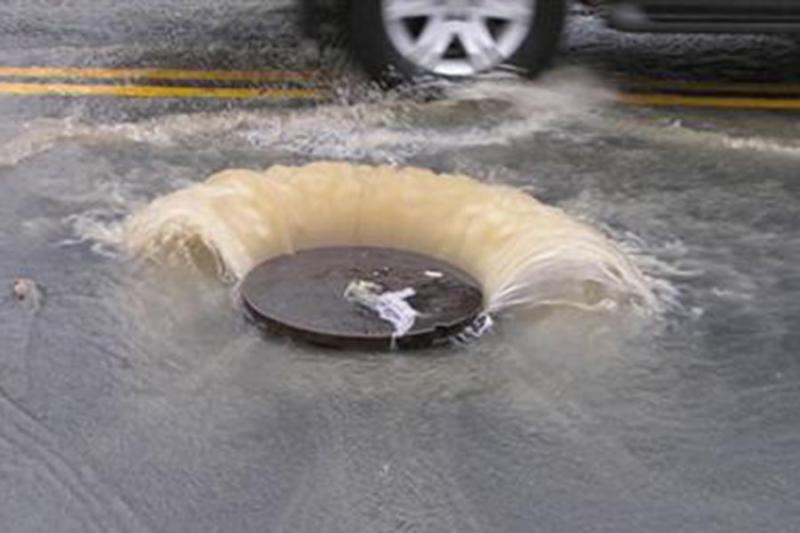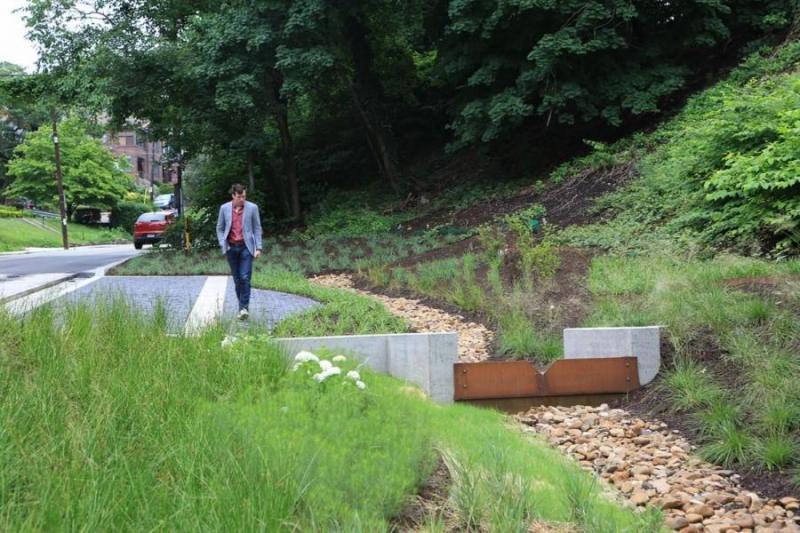Stormwater infrastructure shows its age
Pittsburgh, located in southwestern Pennsylvania where the Allegheny, Monongahela, and Ohio Rivers meet, is known for its steel town heritage and its diverse culture. In the early 1900s, the city extensively improved its infrastructure to support the growing metropolitan area by installing underground sewers and water lines, as well as new power lines and roads.
Similar to other industrial cities in the Midwest, Pittsburgh experienced deindustrialization later in the 20th century and then a resurgence in population as the city grew. Aging infrastructure and changing land use that increased impervious area combined with more frequent and intense rainstorms and other impacts of climate change resulted in more sewer overflows, surface flooding, basement sewage flooding, and poor water quality.
The Pittsburgh Water and Sewer Authority (PWSA), under the direction of Sustainability Manager James J. Stitt, began looking for solutions to its stormwater management challenges that maximized both community and economic benefits and emphasized fairness and affordability.
Planning the project...and how to pay for it
Evaluation of the stormwater management system spawned a scalable implementation plan to address overflow and flooding. The first neighborhood selected was Centre and Herron—identified as a priority neighborhood for combined sewer overflow management as well as for sediment and erosion control. The Little Negley Run neighborhood was also selected to mitigate flooding of a roadway and restore a historic stream. The plan included the Saw Mill Run Integrated Watershed Plan, which utilizes green and gray infrastructure to achieve water quality goals.
Stormwater management projects of this magnitude don’t come cheaply, so the city moved to create an impervious-area fee structure to raise needed revenue. In 2019, PWSA convened a stormwater advisory group to engage community and stakeholder groups to ensure development of an equitable stormwater rate plan.
The project included surface mapping of pervious, paved, and permeable areas to establish a fee structure for the impervious area. PWSA also made various permitting process and code improvements, most notably unifying all stormwater codes in one section, instituting an internal policy review process, and coordinating stormwater processes across all jurisdictions. PWSA updated their guidance manuals, improved their defined Level of Service, and is now exploring credit and rebate programs to incentivize green infrastructure and removal of impermeable surfaces on private lands.
Many issues from a single root cause
The primary lesson learned from the reevaluation of Pittsburgh’s stormwater management system was that all of the observed water quality and quantity issues—including combined sewer overflows, sanitary sewer overflows, stream bank erosion, surface flooding, basement backups, and water quality degradation—were symptoms of a single root cause: ineffective or outdated stormwater management.
Once planners eliminated the silos of trying to address each symptom on its own, a plan for true integrated stormwater management was the only feasible option. It also became clear that stormwater management was very much a land use issue and must be closely tied to how the city continues to grow and build out the places to live, work, and play. That, along with public desire to participate, drove the subsequent decision to involve the community in the process of addressing the stormwater issues that most impacted each neighborhood.
While the city still constructs much of its infrastructure underground and out of sight, many of the solutions include above-ground, ecologically engineered techniques that must become part of the neighborhood fabric.
Sustaining progress over time
In May of 2022, the updated Pittsburgh stormwater ordinance was put into effect. This involved the creation of a stormwater permit and inspection process for all developments meeting the designated threshold, along with the publication Stormwater Design Manual to act as a supplement to the code for applicants. The team has been successfully reviewing these permits and has issued three in the year the program has been online.



